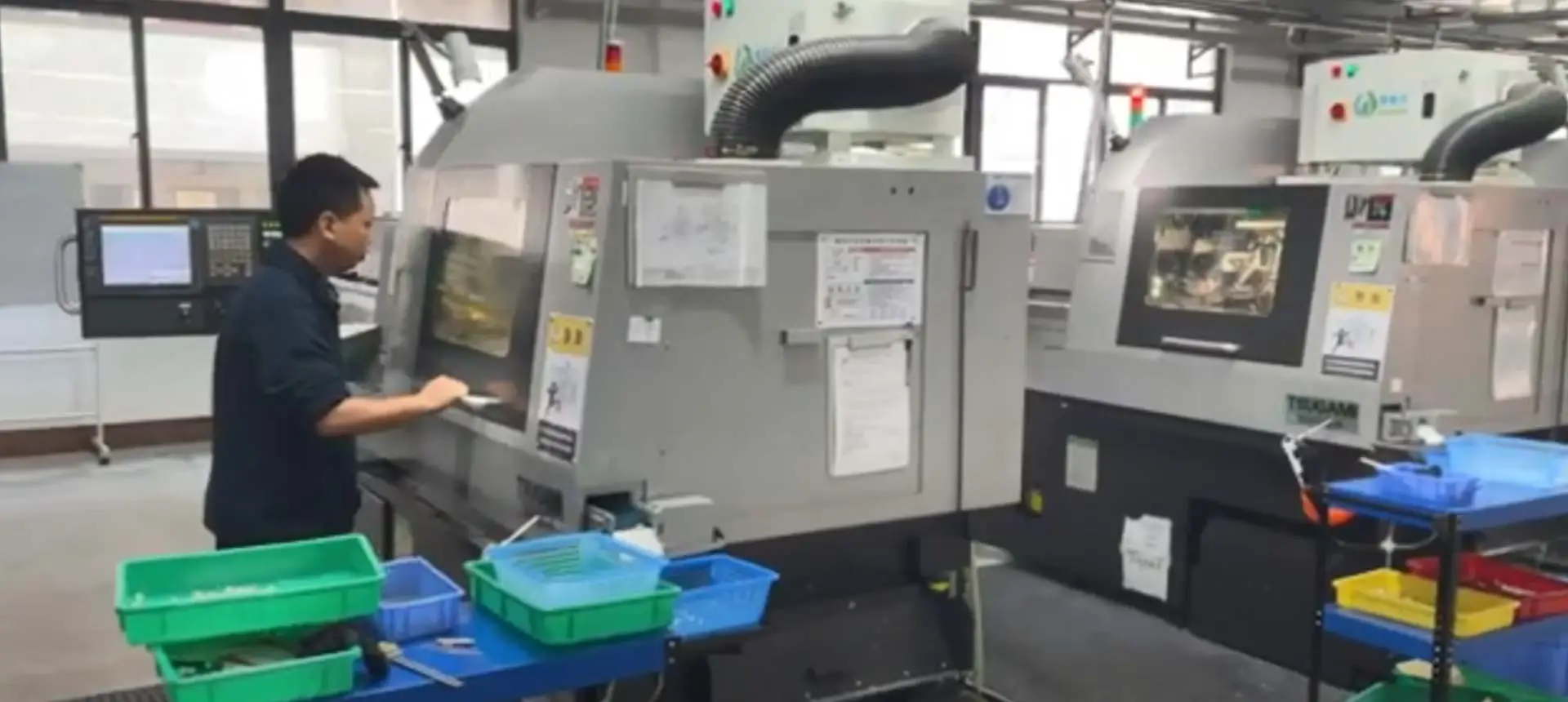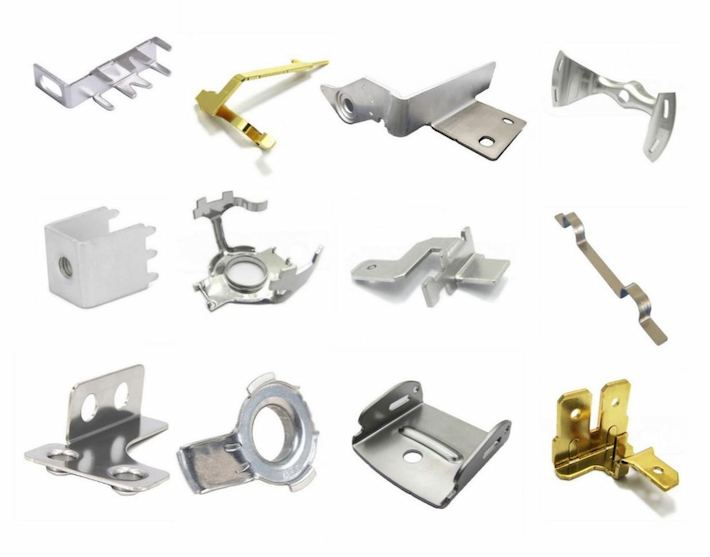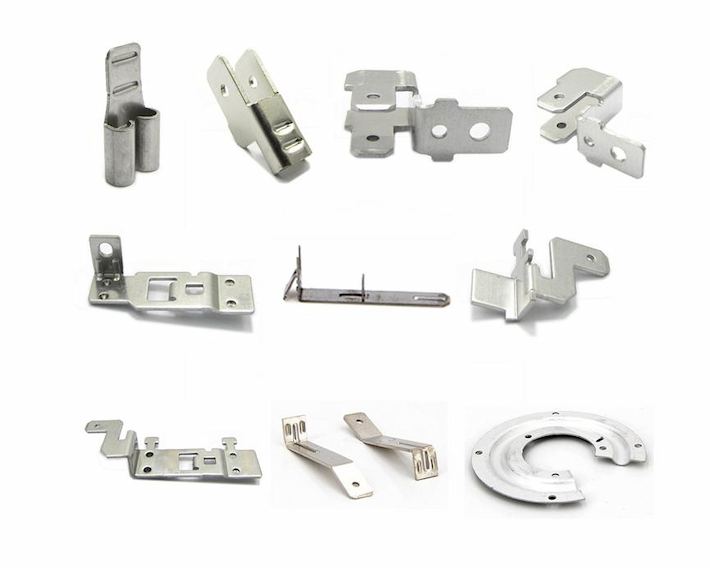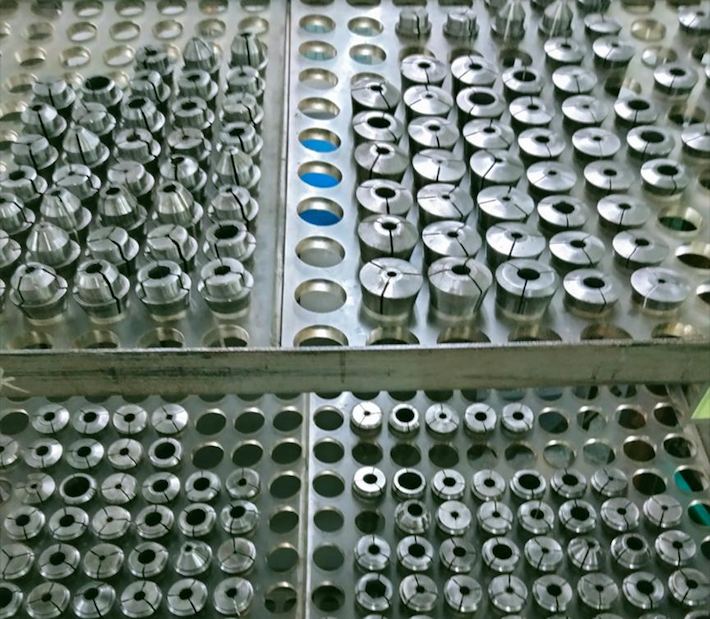
Kiểm soát chất lượng các bộ phận dập bao gồm các biện pháp và quy trình khác nhau để đảm bảo rằng các bộ phận đáp ứng các thông số kỹ thuật và tiêu chuẩn cần thiết. Điều này bao gồm sử dụng các công cụ kiểm tra tiên tiến, tiến hành kiểm tra trực quan, thực hiện kiểm tra chiều và thực hiện kiểm tra hiệu suất. Thông qua kiểm soát chất lượng nghiêm ngặt, các bộ phận dập có thể được xác minh để đáp ứng yêu cầu của khách hàng, cải thiện chất lượng sản phẩm và giảm khuyết tật, cuối cùng dẫn đến sự hài lòng của khách hàng cao hơn và hiệu quả kinh doanh tốt hơn.
Con dấu bằng thép không gỉ chính xác hhc được biết đến với độ bền, độ bền và khả năng chống ăn mòn vượt trội. Quy trình dập tiên tiến có thể tạo ra các hình dạng và thiết kế phức tạp để đáp ứng nhu cầu của các ngành công nghiệp khác nhau như ô tô, hàng không, điện tử, y tế và chế biến thực phẩm. Các tính năng của bộ phận dập bao gồm:
Độ bền và độ bền cao:Thích hợp cho tải trọng cao và môi trường khắc nghiệt.
Chống ăn mòn tuyệt vời:Chịu được độ ẩm, hóa chất và nhiệt độ cao.
Sản xuất chính xác:Đáp ứng nhu cầu tùy chỉnh của khách hàng, đảm bảo chất lượng cao và hiệu quả chi phí.
Sử dụng các bộ phận dập trong sản xuất mang lại nhiều lợi ích, bao gồm hiệu quả sản xuất cao, hiệu quả chi phí và độ chính xác. Các bộ phận dập có thể được sản xuất với số lượng lớn với chất thải tối thiểu, dẫn đến chi phí sản xuất thấp hơn. Chúng cũng có độ chính xác cao, cho phép chất lượng ổn định và hiệu suất Sản phẩm được cải thiện. Ngoài ra, các bộ phận dập rất linh hoạt và có thể được tùy chỉnh để đáp ứng các yêu cầu thiết kế cụ thể, khiến chúng phù hợp với nhiều ứng dụng trong các ngành công nghiệp khác nhau.
Lịch giao hàng nghiêm ngặt: Đảm bảo tuân thủ nghiêm ngặt lịch giao hàng. Đối với các mặt hàng trong kho, các đơn đặt hàng được gửi ngay lập tức khi nhận được, với các tùy chọn vận chuyển đường biển, đường bộ hoặc đường hàng không. Đối với các sản phẩm tùy chỉnh, các quy trình thiết kế đến sản xuất tích hợp đảm bảo Giao hàng nhanh chóng trong vòng 1-4 tuần.
Đảm bảo chất lượng: Hệ thống kiểm tra chất lượng có hệ thống và Máy kiểm tra thông minh 24 giờ đảm bảo chất lượng sản phẩm trong suốt quá trình sản xuất.
Quy trình sản xuất hiệu quả: Quy trình sản xuất của chúng tôi có hiệu quả cao, bao gồm dập, gia công CNC, trung tâm gia công, kéo dài, mạ điện, tẩy, thụ động, làm sạch, mài, lắp ráp, v. v. Các quy trình này cho phép chúng tôi cung cấp các dịch vụ chất lượng cao và các sản phẩm cạnh tranh.
Cựu chiến binh đáng kính trong sản xuất phần cứng: với hơn 23 năm kinh nghiệm và một xưởng sản xuất trải dài 33,000 mét vuông, chúng tôi đã trở thành một nhà lãnh đạo đáng tin cậy trong ngành, tự hào với khu công nghiệp của riêng mình.
Trong thế giới chế tạo kim loại, hai quy trình phổ biến, dập và đục lỗ, đóng vai trò quan trọng trong việc tạo hình vật liệu cho các ứng dụng khác nhau. Mặc dù chúng có chung điểm tương đồng, nhưng hiểu được sự khác biệt chính giữa dập và dập là điều cần thiết cho các nhà sản xuất và kỹ sư. Bài viết này đi sâu vào các sắc thái tách biệt các quy trình này, cung cấp thông tin chi tiết về thời điểm sử dụng từng phương pháp để có kết quả tối ưu.
Dập:
Dập bao gồm việc sử dụng khuôn để tạo hình và tạo thành các tấm hoặc dải kim loại. Khuôn, thường được làm bằng thép cứng, có hoa văn hoặc thiết kế mong muốn. Một máy ép tác dụng lực lên vật liệu, làm cho nó có hình dạng của khuôn. Quá trình này thường được sử dụng để tạo ra các hình dạng, hoa văn hoặc Logo phức tạp trên tấm kim loại.
Đấm:
Đấm, Mặt khác, liên quan đến việc loại bỏ một phần của vật liệu để tạo ra một lỗ hoặc mở. Một Bộ đục lỗ và khuôn được sử dụng, với cú đấm buộc đường đi qua vật liệu để tạo ra lỗ hoặc hình dạng mong muốn. Đục lỗ đặc biệt hiệu quả để tạo ra các lỗ đơn giản và nhất quán trong các thành phần kim loại khác nhau.
Dập:
Dập được ưa chuộng cho các ứng dụng yêu cầu thiết kế phức tạp, hoa văn hoặc các tính năng dập nổi. Nó thường được sử dụng trong các ngành công nghiệp như sản xuất ô tô, điện tử và thiết bị cho mục đích trang trí hoặc chức năng.

Đấm:
Việc đục lỗ rất phù hợp cho các ứng dụng cần có các lỗ đơn giản và nhất quán, chẳng hạn như trong việc tạo ra các giá đỡ, tấm hoặc các thành phần yêu cầu mở đồng đều. Nó được sử dụng rộng rãi trong các ngành công nghiệp như xây dựng, chế tạo kim loại và HVAC.

Trong khi dập và đục lỗ chia sẻ điểm chung trong lĩnh vực chế tạo kim loại, sự khác biệt nằm ở các ứng dụng cụ thể của chúng và kết quả đạt được. Dập nổi trội trong việc tạo ra các thiết kế và hoa văn phức tạp trong khi đục lỗ là phương pháp được lựa chọn để tạo ra các lỗ chính xác.
Hhc (haohaichang) cung cấp nhiều tùy chọn đặt hàng để đáp ứng nhu cầu đa dạng của khách hàng. Từ việc tạo mẫu mẫu tùy chỉnh đến sản xuất quy mô nhỏ, trung bình và lớn, hhc cung cấp sự hợp tác từ đầu đến cuối. Hhc Hứa hẹn các dịch vụ tích hợp liền mạch từ xác nhận mẫu đến sản xuất hàng loạt.

1. Tạo mẫu theo yêu cầu:
Hhc nhận thấy tầm quan trọng của việc phát triển nguyên mẫu trong quá trình thiết kế và xác nhận sản phẩm. Với sự tập trung chuyên dụng vào việc đáp ứng các thông số kỹ thuật của khách hàng, hhc cung cấp các dịch vụ tạo mẫu mẫu tùy chỉnh. Giai đoạn này cho phép khách hàng đánh giá tính khả thi, thiết kế và chức năng của các bộ phận trước khi cam kết Khối lượng sản xuất lớn hơn.
2. đơn hàng theo lô nhỏ:
Đối với các dự án đòi hỏi số lượng hạn chế, hhc đáp ứng các đơn đặt hàng theo lô nhỏ với độ chính xác và hiệu quả. Các Đơn đặt hàng nhỏ rất lý tưởng để thử nghiệm thị trường ban đầu, đảm bảo khách hàng có thể giới thiệu sản phẩm của họ với Rủi Ro tối thiểu và chất lượng tối ưu.
3. Đơn hàng lô trung bình:
Khi các doanh nghiệp mở rộng, nhu cầu về các đơn đặt hàng lô trung bình phát sinh. Hhc chuyển đổi liền mạch từ Khối lượng sản xuất nhỏ sang trung bình, cung cấp cùng mức độ chú ý đến chi tiết và đảm bảo chất lượng. Tính linh hoạt này đáp ứng nhu cầu phát triển của khách hàng trong các ngành công nghiệp khác nhau.
4. đơn hàng lô lớn:
Khả năng của hhc mở rộng đến sản xuất quy mô lớn, phục vụ khách hàng với các yêu cầu về khối lượng đáng kể. Tận dụng công nghệ tiên tiến và quy trình sản xuất hợp lý, hhc đảm bảo giao hàng hiệu quả và kịp thời cho các đơn hàng lớn mà không ảnh hưởng đến chất lượng.
Cam kết đặt hàng linh hoạt của hhc làm cho nó khác biệt trong lĩnh vực chế tạo kim loại. Từ nguyên mẫu tùy chỉnh đến Khối lượng sản xuất dập OEM quy mô lớn, hhc cung cấp một loạt các dịch vụ liền mạch và toàn diện. Khách hàng có thể tin tưởng hhc để điều hướng mọi giai đoạn của quy trình sản xuất, đảm bảo rằng các yêu cầu độc đáo của họ được đáp ứng với độ chính xác và hiệu quả.
Dập kim loại, còn được gọi là ép, là quá trình tạo thành các tấm kim loại hoặc Dải thành các hình dạng và cấu hình mong muốn bằng cách sử dụng máy dập và khuôn dập. Quy trình sản xuất này liên quan đến việc áp lực lên phôi kim loại, làm cho nó biến dạng hoặc thay thế, do đó tạo ra hình dạng hoặc hoa văn mong muốn. Quy trình dập của hhc bao gồm các kỹ thuật như cắt, đục lỗ, uốn, kéo dài, tạo hình và dập nổi.
Khi một thao tác dập đơn không thể đạt được hình dạng yêu cầu hoặc khi hình dạng phôi rất phức tạp, chúng tôi sử dụng dập khuôn tiến bộ. Trong một bộ khuôn duy nhất, mỗi trạm được trang bị một hoặc một số quy trình dập cơ bản để hoàn thành việc xử lý một phần cụ thể của phôi được đóng dấu. Điều này bao gồm một chuỗi các hoạt động liên tục bao gồm cắt, uốn, đục lỗ, ép và tạo hình.
Chúng tôi có trụ sở tại thâm quyến và có khu công nghiệp riêng ở Huệ Châu. Với 23 năm kinh nghiệm trong lĩnh vực sản xuất phần cứng, chúng tôi đã xây dựng được đội ngũ chuyên gia kỹ thuật chuyên về cải tiến liên tục và đội ngũ quản lý giàu kinh nghiệm. Nhờ thiết bị tiên tiến và hỗ trợ Tổ Chức, hhc có thể tận dụng chuyên môn của mình trong thiết kế và sản xuất trong ngành công nghiệp phần cứng đồng thời đảm bảo các sản phẩm và dịch vụ chất lượng cao và tạo ra lợi nhuận hợp lý. Do đó, chúng tôi tự tin đối mặt với Rủi Ro bất cứ lúc nào. Chào mừng bạn đến thăm công ty chúng tôi để kiểm tra. Tòa nhà A1, khu công nghiệp rongchang, khu hedong số 440, hengkeng, guanlan, Quận Long Hoa, Thành phố thâm quyến, tỉnh Quảng Đông, Trung Quốc
Hhc sản xuất một loạt các bộ phận được đóng dấu, bao gồm loại kéo dài, loại mặt bích, loại khung nhỏ, loại đầu nối dây, loại kẹp cố định, loại tấm lò xo, đầu nối loại thiết bị đầu cuối, và các sản phẩm loại thiết bị đầu cuối. Chúng được sử dụng rộng rãi trong các thành phần thiết bị gia dụng, linh kiện ô tô, ngành công nghiệp lưu trữ năng lượng mới, linh kiện điện tử tiêu dùng, máy bay nhỏ, Radar truyền thông và ngành y tế.
Việc xác định các vật liệu tốt nhất cho các sản phẩm được đóng dấu bao gồm việc xem xét các yếu tố như yêu cầu chức năng, đặc tính vật liệu, môi trường hoạt động và chi phí. Ví dụ, hợp kim nhôm 7075-t6 thường được sử dụng trong các hệ thống treo xe, trong khi thép 45 # thường được sử dụng trong các hệ thống truyền động của xe và thép không gỉ 304 thường được sử dụng để đo ống xả. Đồng thau c26000 thường được sử dụng trong bộ tản nhiệt ô tô, và hợp kim đồng-niken c70600 thường được tìm thấy trong các hệ thống phanh, trong số những người khác. Chúng tôi sẽ cung cấp các khuyến nghị giải pháp tốt nhất dựa trên các điều kiện cụ thể trong đơn đăng ký của khách hàng.


